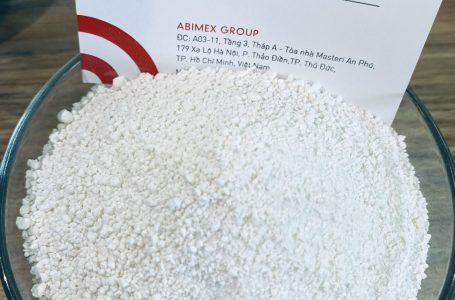
In the competitive world of food manufacturing, achieving the right balance of texture, stability, and consistency in chili sauce is key to standing out. As consumer demand for premium quality sauces increases, producers are continuously looking for ways to improve their product formulations. One of the critical ingredients that has proven to be a game-changer in the production of chili sauce is modified tapioca starch.
Modified tapioca starch, derived from the cassava root, offers enhanced functionality compared to native starch. Through physical, enzymatic, or chemical processes, the structure of the starch is altered to perform specific roles in food applications. In chili sauce production, it plays multiple essential roles in enhancing the stability of the product. Let’s dive deeper into the seven key ways that modified tapioca starch helps improve chili sauce stability.
1. Viscosity Control
One of the primary roles of modified tapioca starch in chili sauce is to manage and control viscosity. Achieving the right thickness or body for the sauce is essential not only for consumer satisfaction but also for the product’s behavior during processing and packaging. Modified tapioca starches can be tailored to produce sauces with a specific consistency, ranging from thin and pourable to thick and spoonable.
Because tapioca starch is highly stable under a variety of temperatures and shear forces, it ensures that chili sauce maintains a consistent viscosity during cooking, filling, and even during long-term storage.
2. Prevention of Phase Separation
Phase separation, often seen as the separation of water and oil in sauces, is a common issue in chili sauce production. It can lead to an unappealing appearance and an uneven distribution of flavor. Modified tapioca starch plays a crucial role in preventing this separation by stabilizing emulsions. It acts as a binding agent that holds the water and oil together, ensuring that the sauce remains homogenous.
This is particularly important during storage, as consumers expect their chili sauces to look the same from the day they buy them until the bottle is empty. Using modified tapioca starch allows manufacturers to meet this expectation by preventing syneresis (the leakage of liquid) and keeping the sauce stable.
3. Heat and Shear Stability
During the cooking process, chili sauce is often subjected to high temperatures and vigorous stirring, which can break down the natural structure of native starches, leading to thinning of the sauce. Modified tapioca starches, however, are designed to withstand these harsh conditions.
Their improved heat and shear stability means that the starch molecules remain intact, maintaining the thickness and structure of the chili sauce even after extensive cooking or mechanical processing. This property ensures the sauce has a uniform texture and viscosity, no matter how intense the processing conditions are.
4. Improved Freeze-Thaw Stability
Many chili sauces are frozen at some point during production, distribution, or by consumers for extended storage. However, freezing and thawing can cause sauces made with native starch to break down, resulting in an undesirable watery texture.
Modified tapioca starch has excellent freeze-thaw stability, preventing the sauce from breaking apart during these processes. This quality is especially beneficial for manufacturers exporting to regions with varying climates or when producing sauces intended for long-term storage. Consumers can enjoy a consistent product whether it’s freshly made or has been thawed after months in the freezer.
5. Enhanced Mouthfeel
Texture is a critical factor that affects consumer satisfaction with chili sauces. Modified tapioca starch provides a smooth, appealing mouthfeel that native starches often can’t match. It imparts a creamy texture without being overly thick or gummy, which is essential for delivering a premium eating experience.
The smooth texture of modified tapioca starch enhances the perceived quality of chili sauces, making them more enjoyable to consume. This is particularly important in the highly competitive sauce market, where texture can make or break a product’s success.
6. pH Stability
Chili sauces often contain acidic ingredients such as vinegar or lime juice, which can affect the stability of certain starches. Native starches tend to break down under acidic conditions, leading to a loss of viscosity and a poor-quality sauce. Modified tapioca starches, however, are designed to be stable across a wide pH range, including in acidic environments.
This pH stability ensures that the sauce maintains its thickness and overall quality, even when formulated with highly acidic ingredients. It’s a critical factor for producers who want to maintain the integrity of their product while using bold, tangy flavors that consumers love.
7. Cost-Effectiveness
While the focus of this article is on product quality, cost is always a consideration in food manufacturing. Modified tapioca starches offer an economical solution for chili sauce producers looking to enhance the stability and performance of their products. Because modified starches are highly efficient at thickening and stabilizing sauces, manufacturers can use smaller quantities to achieve the desired effect compared to other starches or stabilizers.
This cost-effective functionality not only improves the quality of the final product but also helps keep production costs in check, which is crucial in a competitive marketplace.
Conclusion
In conclusion, modified tapioca starch plays seven essential roles in enhancing the stability of chili sauce. From controlling viscosity and preventing phase separation to improving freeze-thaw stability and mouthfeel, this versatile ingredient helps manufacturers create high-quality, consistent, and shelf-stable chili sauces. As consumer demand for premium products continues to rise, producers can rely on modified tapioca starch to meet these demands while maintaining cost-efficiency in production.







